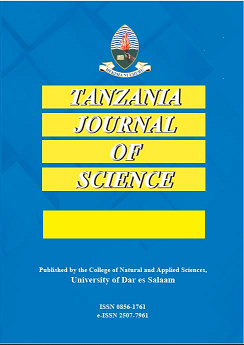Facile Fabrication of Water Filters with Desirable Properties for Removal of Pathogenic E. coli from Drinking Water at point-of-use
DOI:
https://doi.org/10.4314/tjs.v50i4.11Keywords:
Ceramic filters, Silver nanoparticles, Waterborne diseases, Water disinfection, alcinationAbstract
The inevitable consequences of waterborne diseases caused by consuming contaminated water have prompted the development of low-cost water filtration technologies that surpass traditional purification methods in effectiveness. Ceramic water filters have been extensively researched due to their promising application in the filtration and purification of water to produce clean and safe drinking water. The present study reports the synthesis of ceramic filtration systems incorporating silver nanoparticles with desirable properties for water purification. The obtained samples were examined by XRD, XRF, and SEM analyses. XRD analysis showed that the samples had crystallite sizes ranging between 16 to 22 nm. XRF analysis revealed a high percentage of SiO2 (94%) contributed by the high silica content from sand and rice husk. SEM analyses showed the formation of mainly spherical aggregates. The efficiency of the obtained samples was tested by their performance in filtering pond and river water. Prior to water treatment, E. coli counts and other physiochemical parameters were measured. The colorimetry results on E. coli removal by the prepared samples demonstrated good performance of up to 99.999% for samples of ratio 60:40:7.5 which were sintered at 850 °C. These results indicate that Ag-NPs/CWF samples are capable of removing a variety of pollutants, particularly E. coli and other physiochemical parameters making them a promising solution for water disinfection and purification.


